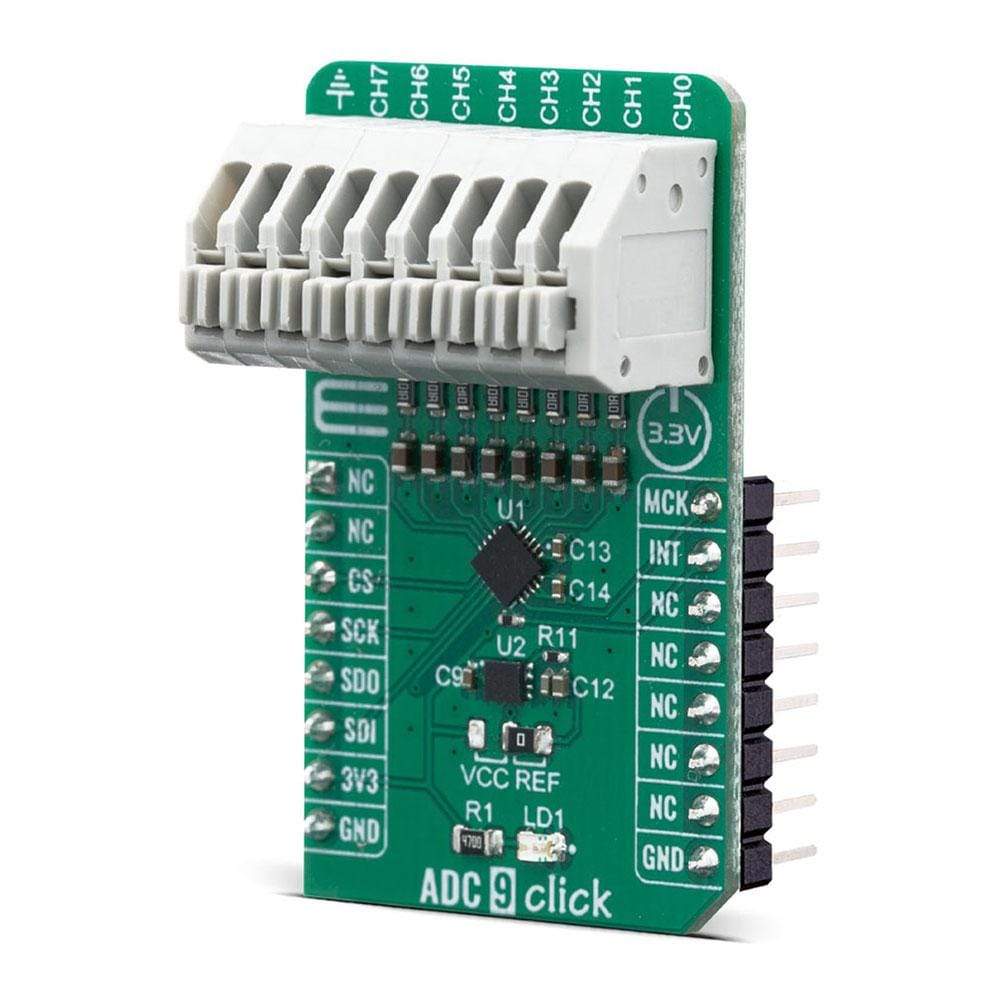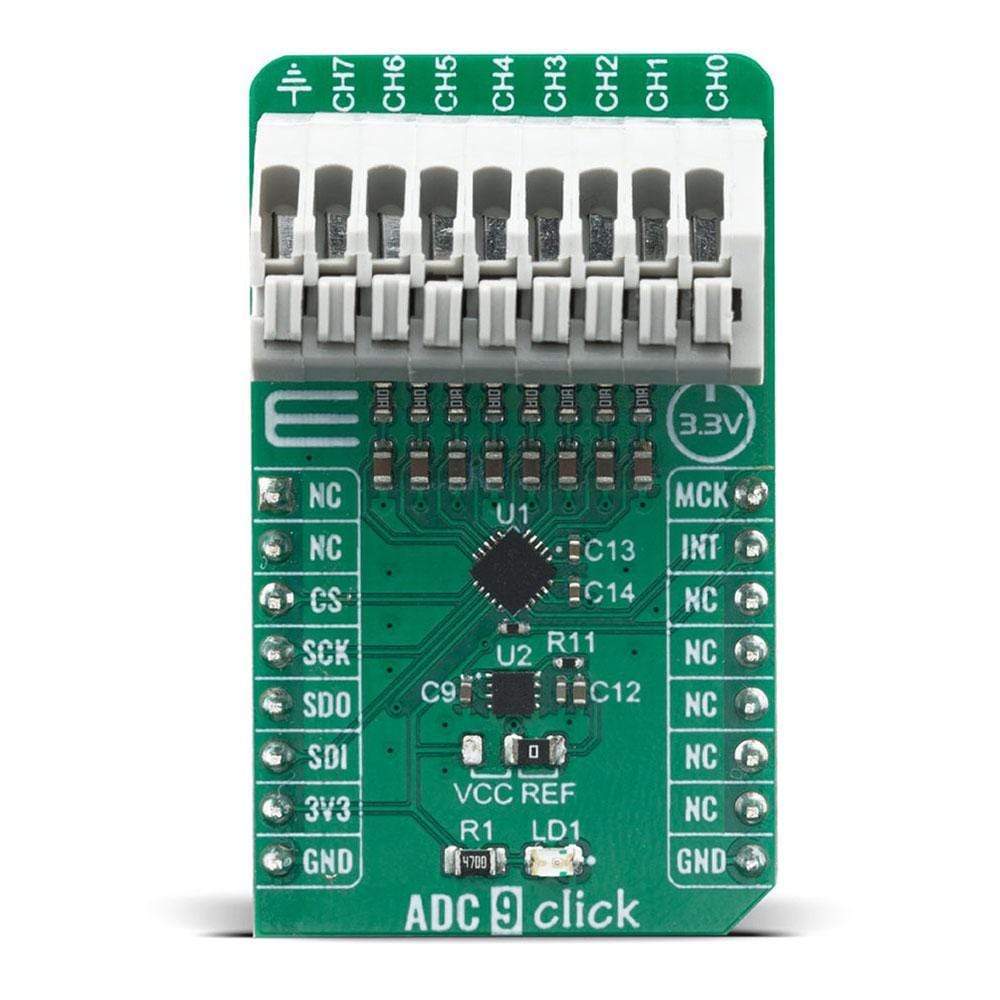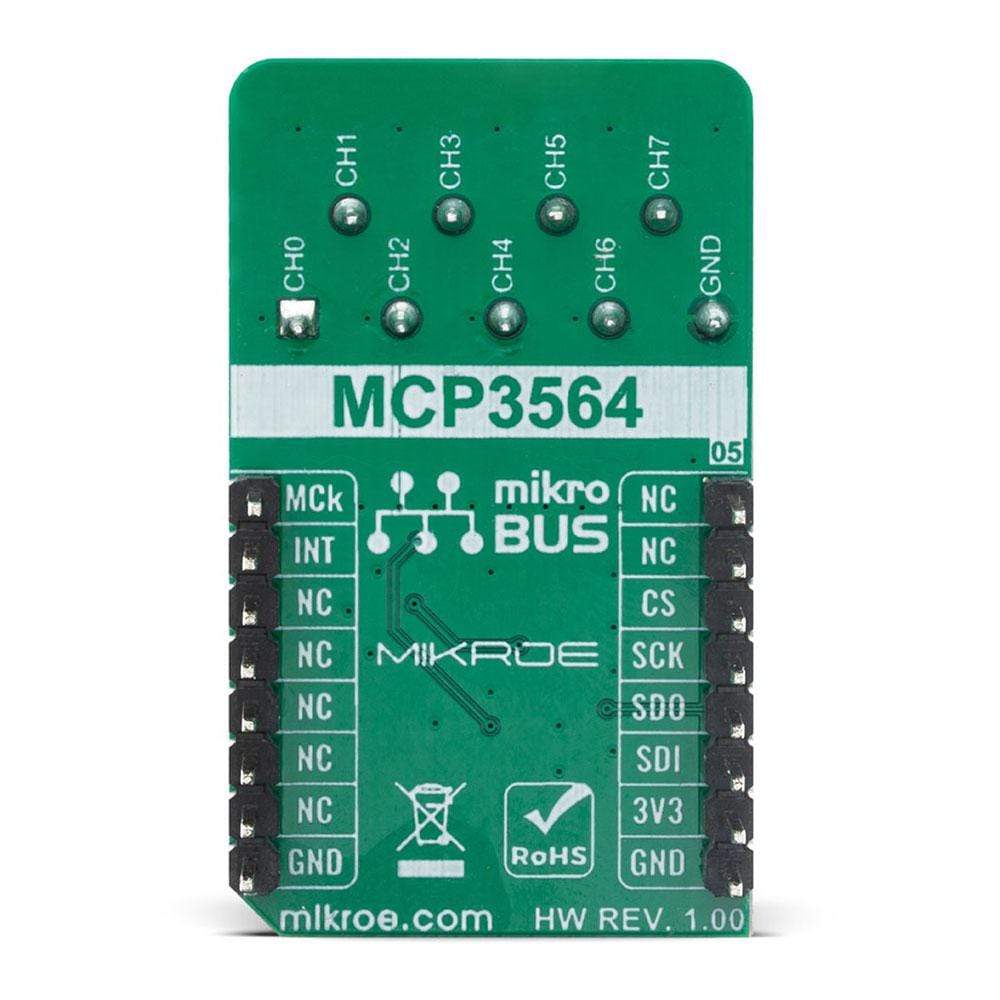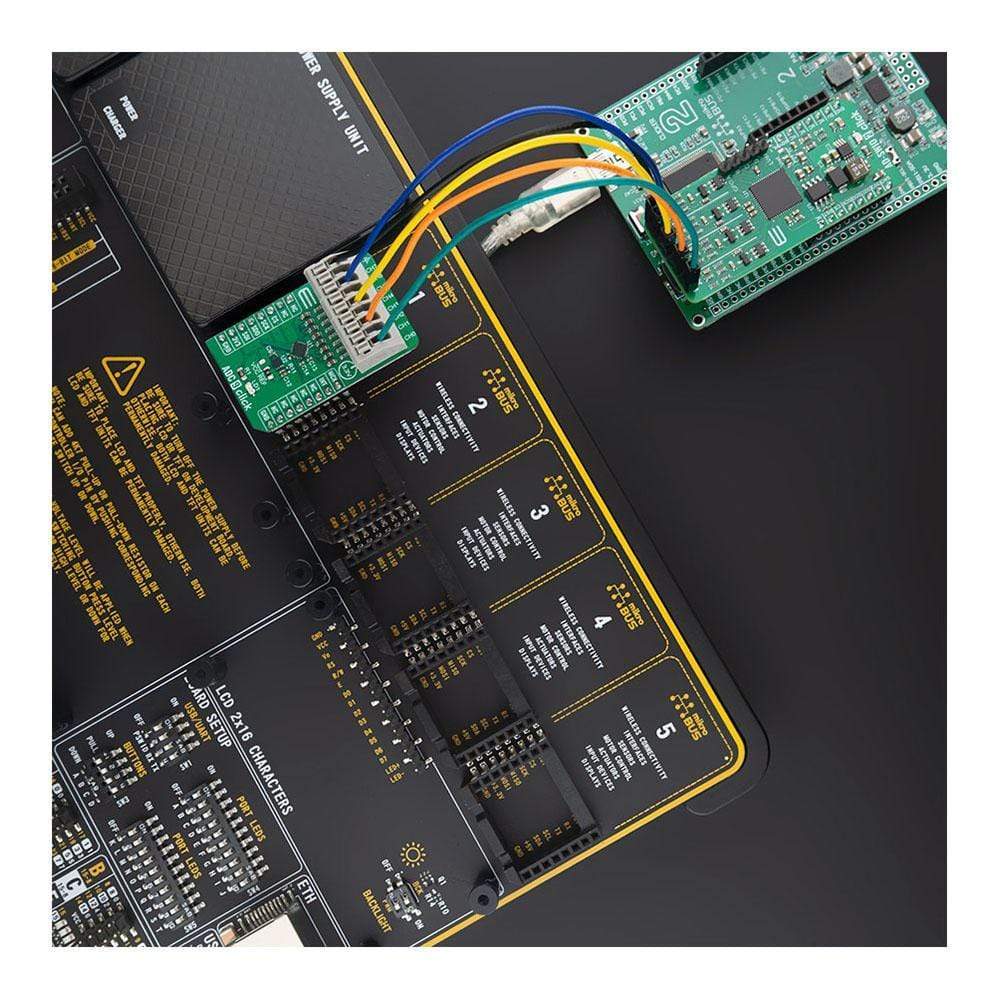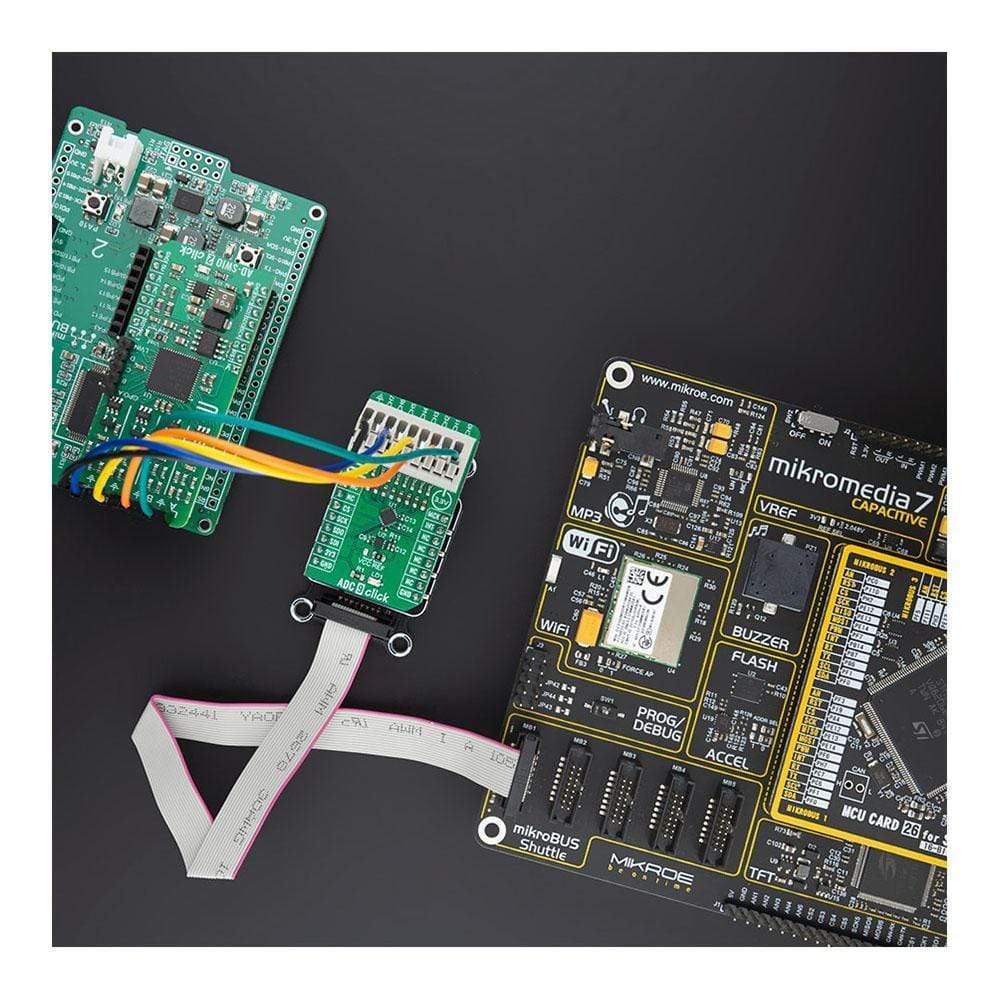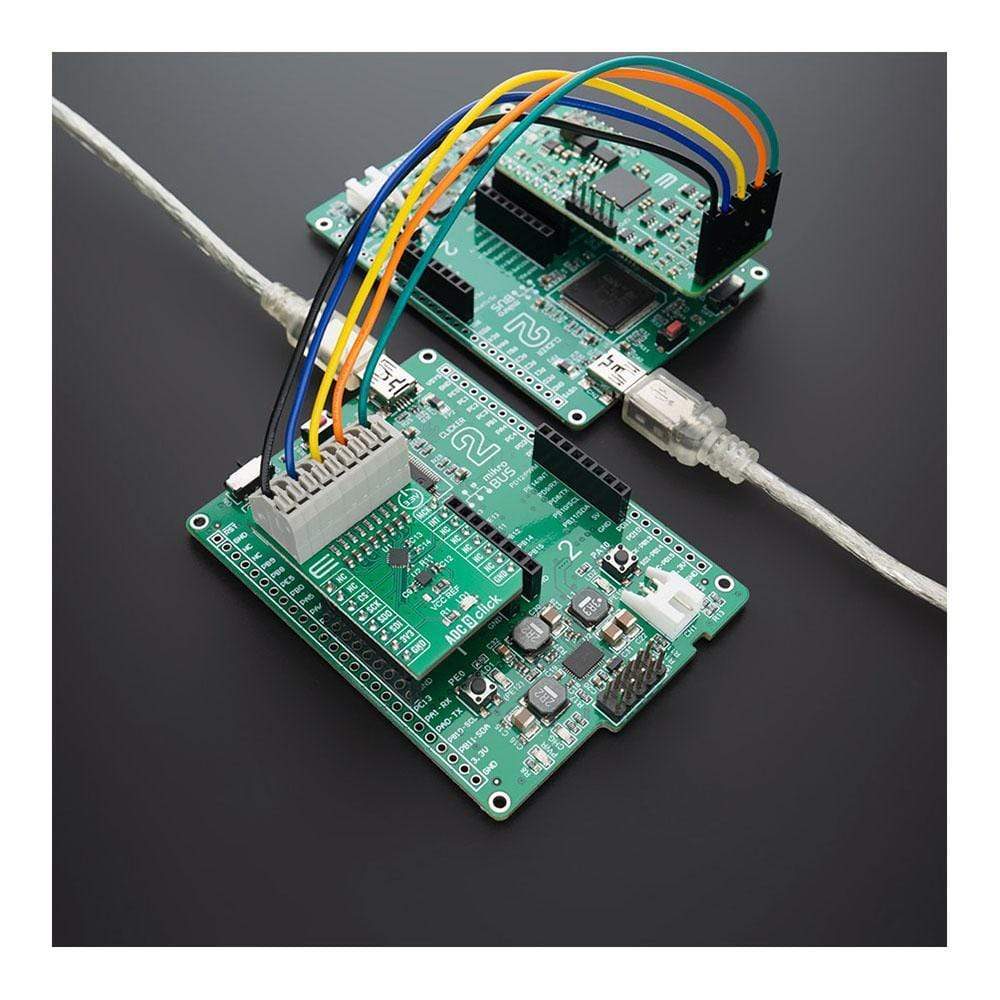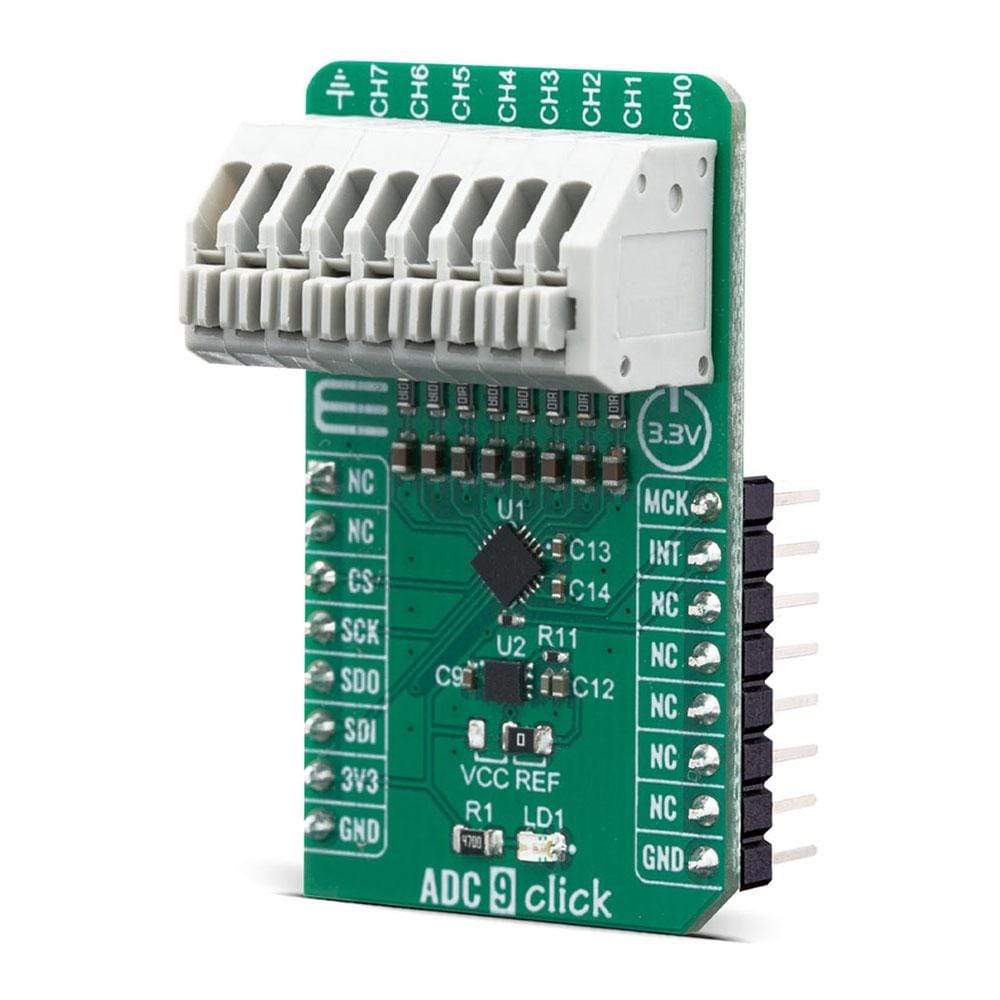
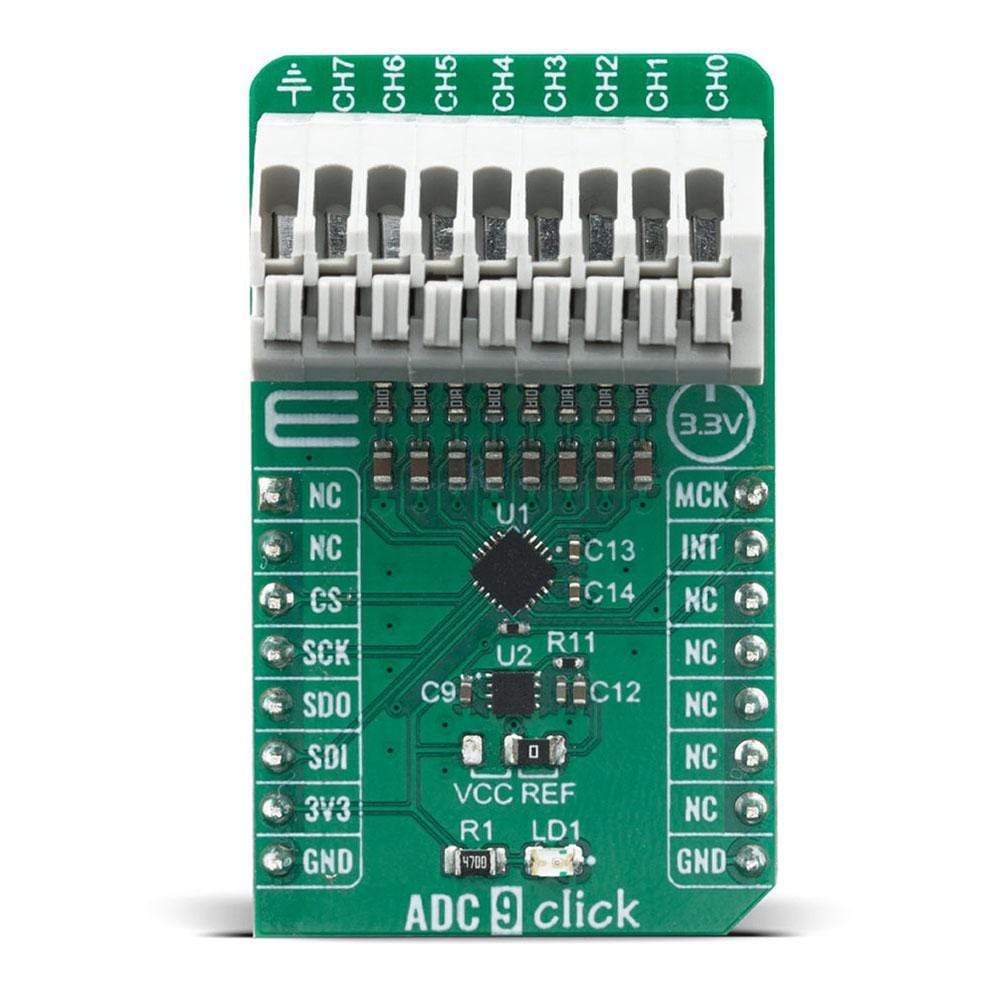
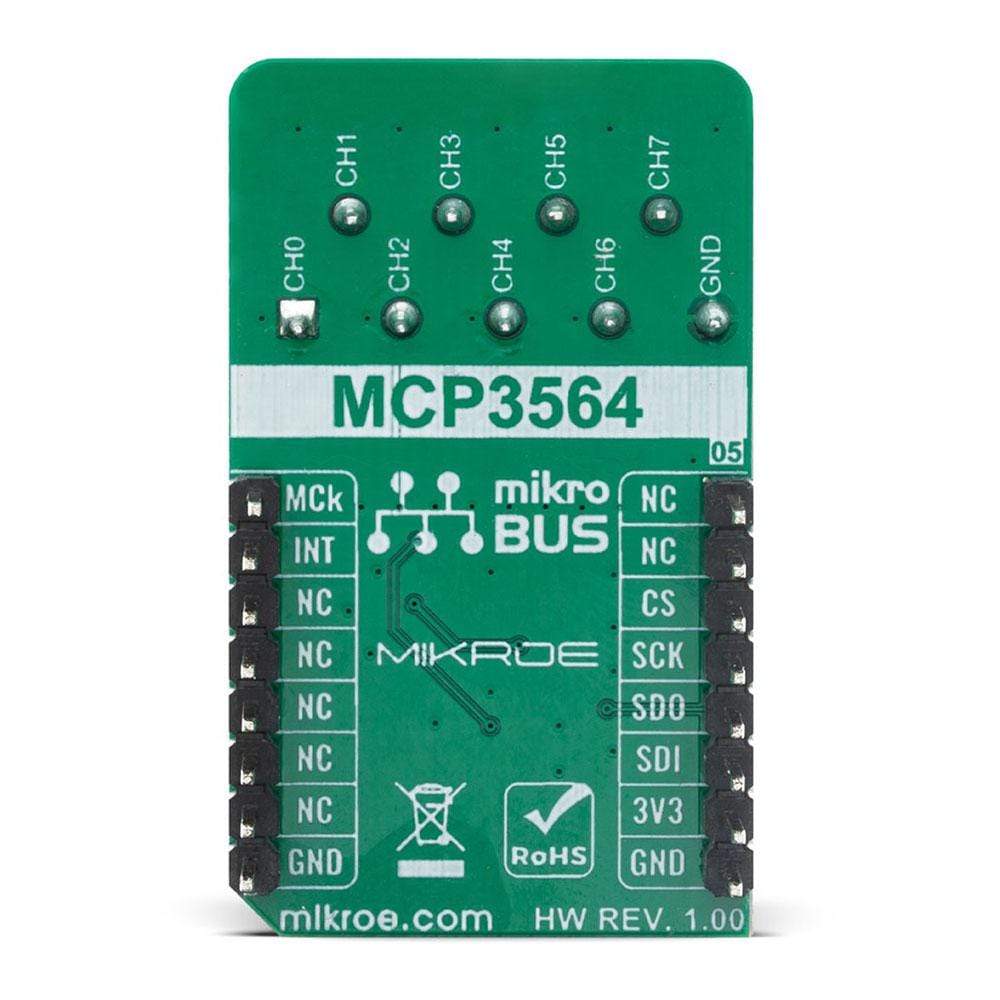
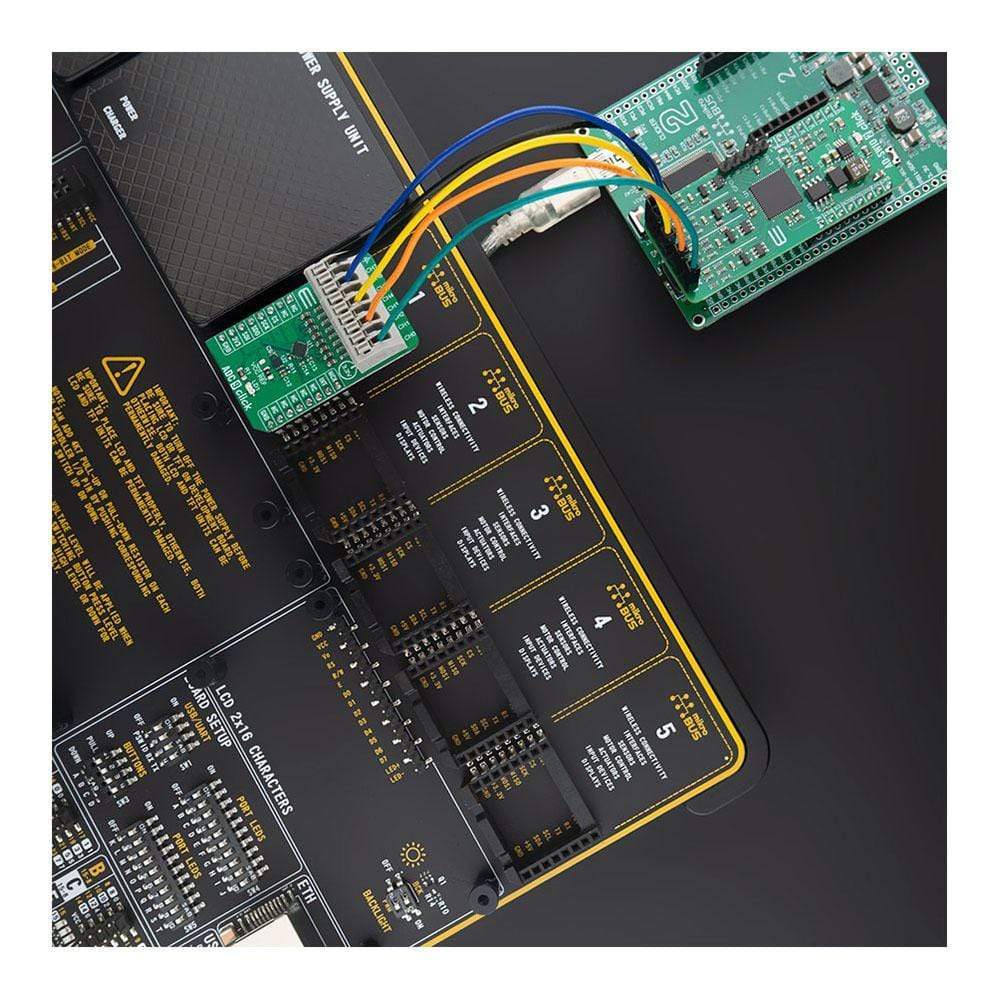
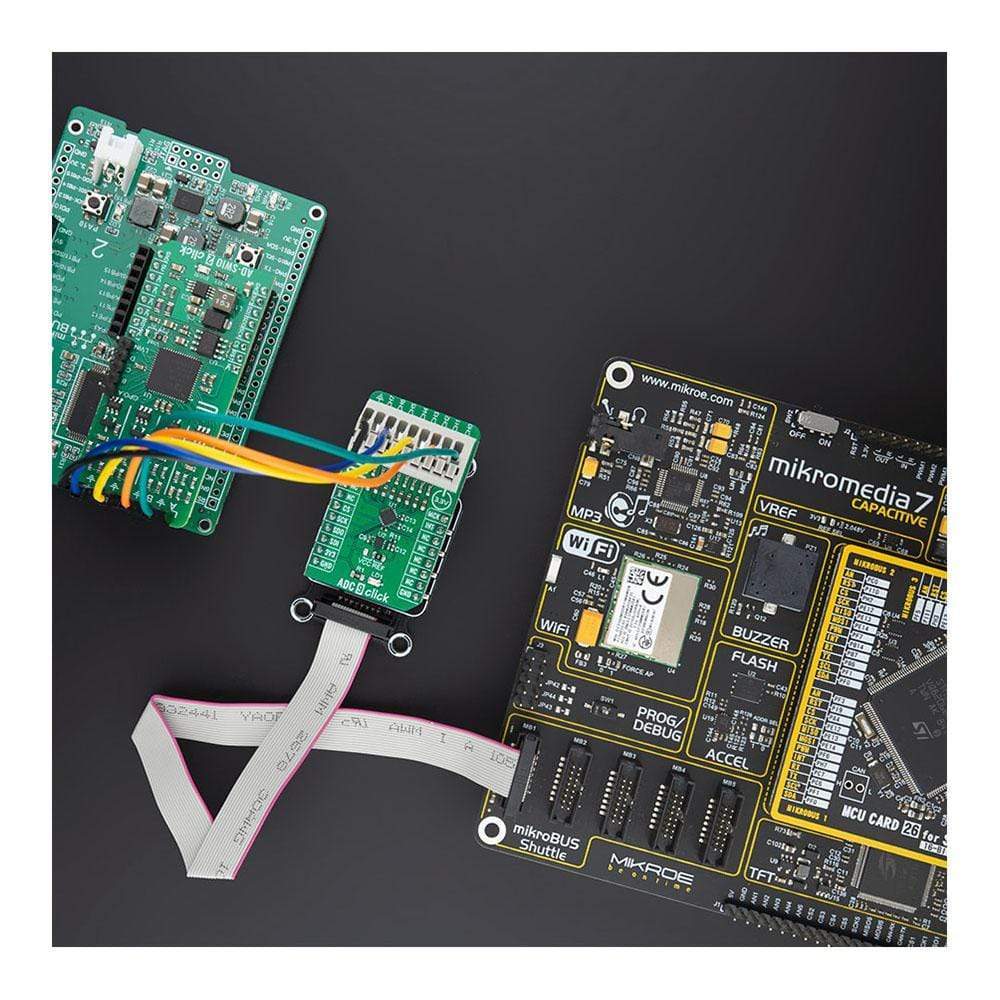
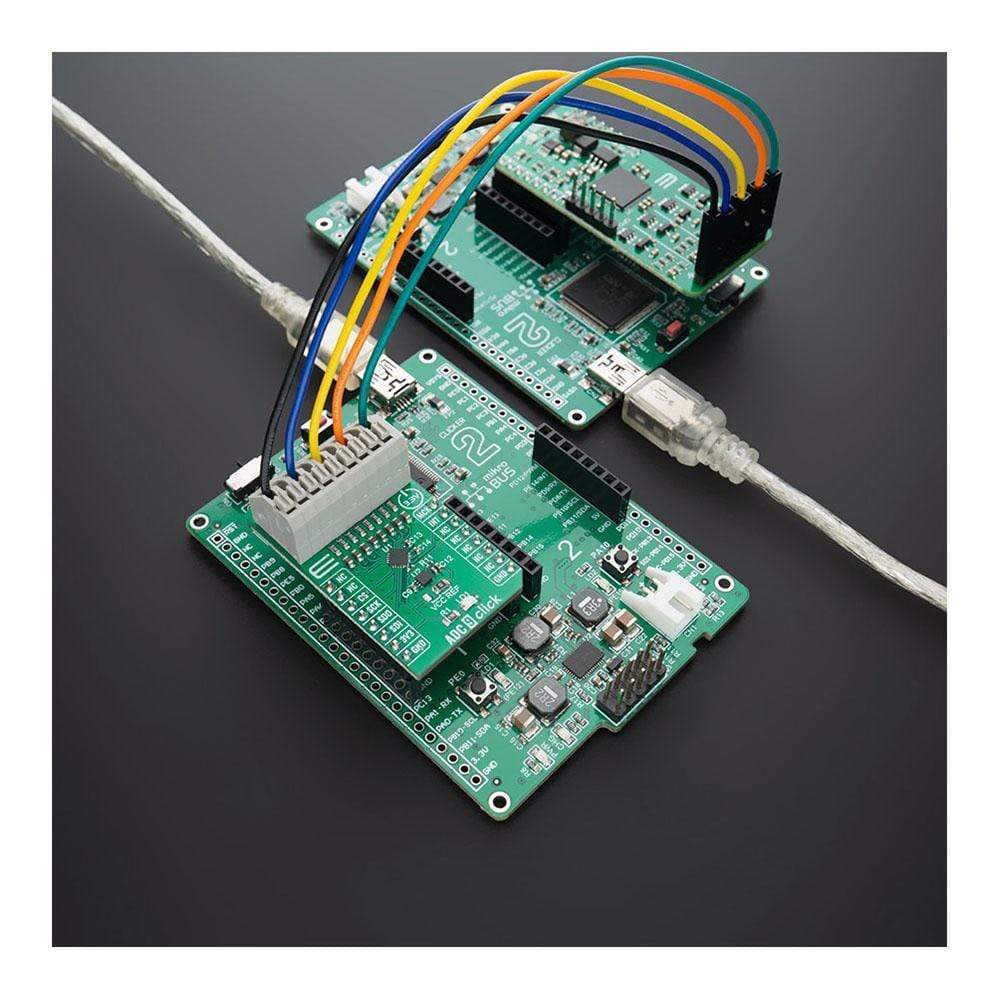
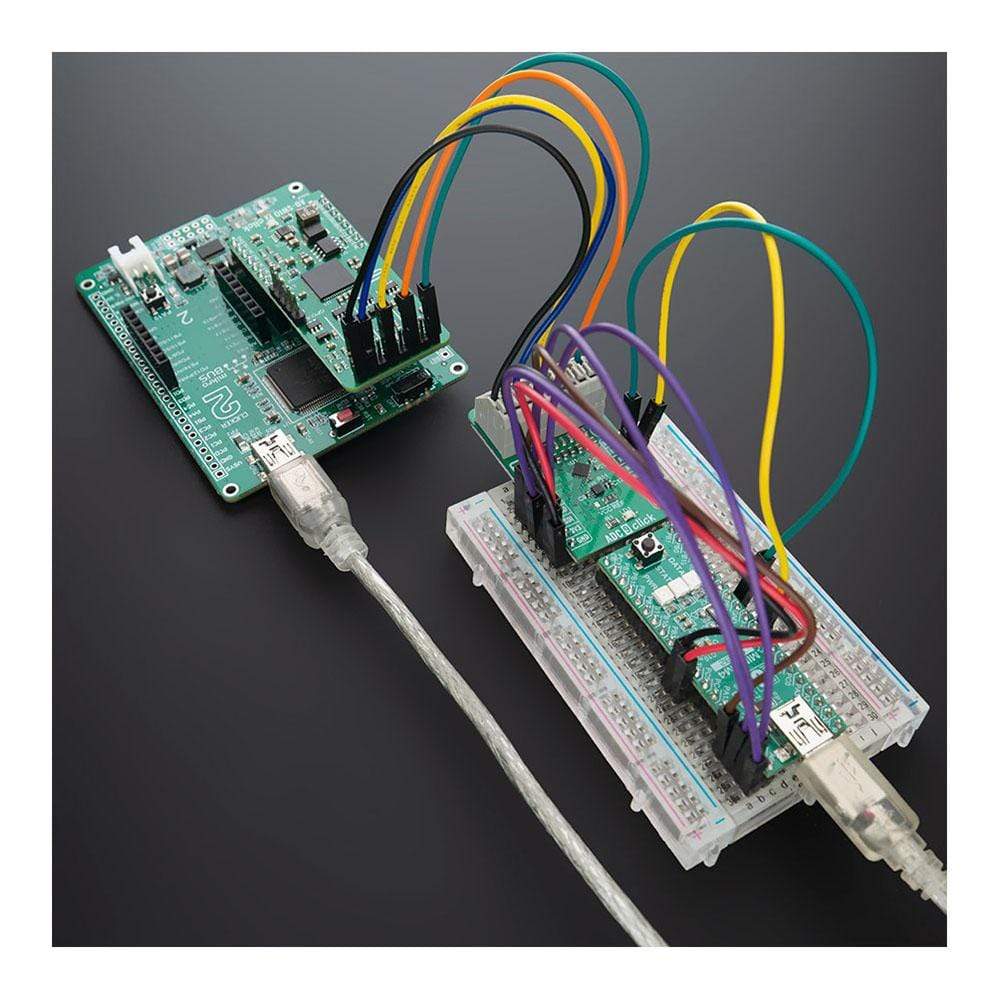
Key Features
Overview
The ADC 9 Click Board™ is the 8th channel analogue to digital converter expansion board, for projects where you have demand for multi-channel ADC conversions such as microcontrollers with a small number or no analogue inputs. This Click board is based on MCP3564 a 24-bit Delta-Sigma Analog-to-Digital Converter with a programmable data rate of up to 153.6 KSPS from Microchip. It offers integrated features, such as an internal oscillator, temperature sensor and burnout sensor detection, in order to reduce system component count and total solution cost. An ideal choice for precision data acquisition systems, high-resolution data converters, industrial control, battery-powered devices and many more.
The ADC 9 Click Board™ is supported by a mikroSDK compliant library, which includes functions that simplify software development. This Click Board™ comes as a fully tested product, ready to be used on a system equipped with the mikroBUS™ socket.
Downloads
Der ADC 9 Click Board™ ist die 8. Kanal-Analog-Digital-Wandler-Erweiterungskarte für Projekte, bei denen Sie Bedarf an Mehrkanal-ADC-Konvertierungen haben, wie z. B. Mikrocontroller mit einer kleinen Anzahl oder keinen analogen Eingängen. Diese Click-Karte basiert auf MCP3564, einem 24-Bit-Delta-Sigma-Analog-Digital-Wandler mit einer programmierbaren Datenrate von bis zu 153,6 KSPS von Microchip. Sie bietet integrierte Funktionen wie einen internen Oszillator, einen Temperatursensor und eine Burnout-Sensor-Erkennung, um die Anzahl der Systemkomponenten und die Gesamtlösungskosten zu reduzieren. Eine ideale Wahl für präzise Datenerfassungssysteme, hochauflösende Datenwandler, industrielle Steuerung, batteriebetriebene Geräte und vieles mehr.
Das ADC 9 Click Board™ wird durch eine mikroSDK-kompatible Bibliothek unterstützt, die Funktionen enthält, die die Softwareentwicklung vereinfachen. Dieses Click Board™ wird als vollständig getestetes Produkt geliefert und ist bereit für den Einsatz auf einem System, das mit der mikroBUS™-Buchse ausgestattet ist.
| General Information | |
|---|---|
Part Number (SKU) |
MIKROE-4105
|
Manufacturer |
|
| Physical and Mechanical | |
Weight |
0.021 kg
|
| Other | |
Country of Origin |
|
HS Code Customs Tariff code
|
|
EAN |
8606018717385
|
Warranty |
|
Frequently Asked Questions
Have a Question?
Be the first to ask a question about this.

